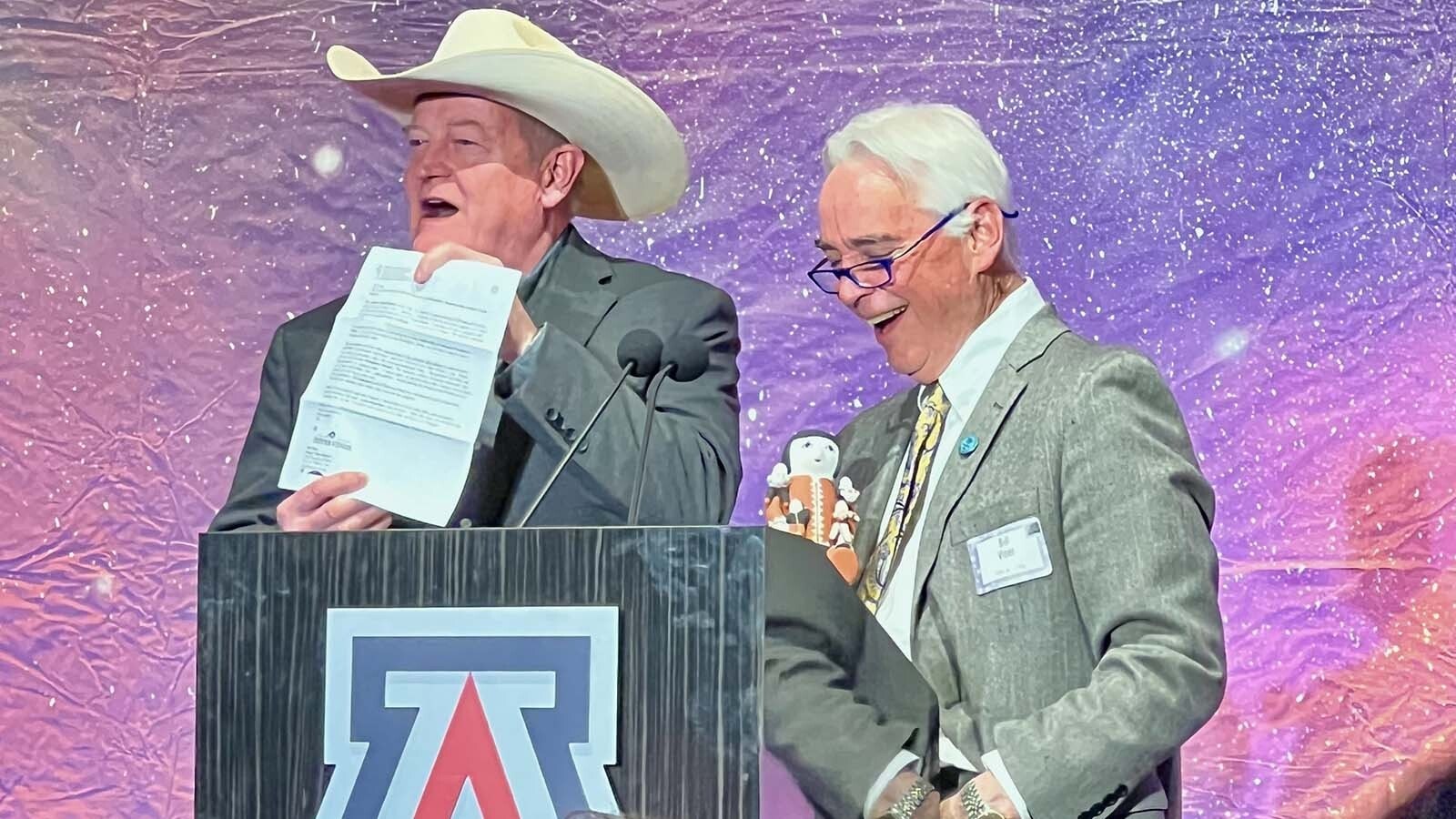Archaeologists use obsidian to determine how far people traveled on ancient trade routes across Wyoming. Each obsidian flake bears a unique volcanic fingerprint that points to its place of origin, which can be hundreds of miles away.
When Wyoming State Archaeologist Spencer Pelton discovers a new obsidian flake, the thin black rock is more than just a relic — it is a clue pointing back to where the obsidian originally came from.
This knowledge helps archaeologists better understand early people and the trade routes they followed.
Obsidian forms when hot lava from a volcano cools down very quickly. Since it cools so fast, it doesn’t have time to form crystals like other rocks, so it ends up smooth and shiny, almost like black glass.
People have used obsidian for thousands of years to make jewelry, tools, and even weapons because it can be shaped into very sharp edges. These products are then traded to other tribes and end up being dispersed all around the trade routes of early America.
To determine which volcano a piece of obsidian comes from, scientists use a tool called X-ray fluorescence to measure its chemical makeup.
They then compare it to known samples from different volcanoes. If the makeup matches, they know where the particular obsidian came from.
The Obsidian Of Willow Springs
“We have a lot of obsidian from the Willow Springs campsite,” Pelton said. “Obsidian isn't everywhere, and this particular site is at least 500 kilometers away from the nearest obsidian source.”
The Willow Springs campsite is located in the southern Laramie Valley on private land about 15 miles south of Laramie on Highway 287. For the past 60 years, archaeologists have continued to make new discoveries at the dig site. Using new technology, old discoveries are now also revealing new clues about the people who once were at the campsite.
Pelton tested samples of obsidian that were dug up in the 1960s by archaeologists William Mulloy and discovered that the obsidian came from at least six different volcanic sites. The farthest was Bear Gulch, Idaho, at 420 miles from the dig site.
“Once we zapped it with the machine, we found that some of the obsidian was from New Mexico, some of it was from northeast Idaho, and then kind of everywhere in between,” Pelton said. “It moves such great distances all the way in basically every direction to the north, south and west.”
A source map was created to show all these areas that the obsidian material came from.
The two sources from Wyoming were Teton Pass, 320 miles away, and the Obsidian Cliffs, 360 miles from Willow Springs campsite.
Cochetopa Dome in Colorado is 250 miles away; and 320 miles away is the New Mexico obsidian site, Valles Caldera. Idaho wins the award for having the two longest distances to travel with Bear Gulch at 420 miles away and Malad, 380 miles away.
Pelton said that the obsidian would have been very valuable to early people, especially the farther away that you were from where the obsidian had been collected.
“I think that that would have been a pretty powerful status symbol,” he said.
Ancient Trade Route
The Willow Creek campsite, located northwest of Tie Siding, has served as a travel corridor for thousands of years.
“People probably camped there at least once a year for a couple thousand years,” Pelton said. “It’s an oasis and so it's somewhere where people wanted to be for a really long time.”
Aside from the obsidian, the early people traded other valuable items such as marine shells and pottery that archaeologists are also closely studying to learn more about Wyoming’s early inhabitants.
“When you start undertaking exchanges of shells from the Pacific Northwest, the archaeological record really starts to look very different,” Pelton said. “This massive trade network spans the entirety of North America and directly influenced the archaeological record of Wyoming.”
The scientists are also tracing obsidian from Wyoming to other regions as well and are impressed by the distance that people would travel to trade items of value.
“We have this obsidian tool found in a ceremonial mound complex in Ohio,” Pelton said. “It's an enormous distance to get from northwest Wyoming to central Ohio.”
Pelton explained that one of the reasons that Wyoming, and especially Willow Creek campsite, were so important to trade is that several different rivers converge on Wyoming and it became a natural corridor to follow when seeking to trade your valuables with another tribe.
He is excited to continue to see what treasures will next be uncovered at Willow Springs as they use modern tools to discover the stories hidden just beneath the surface.
“Willow Springs was probably a hub of trade,” Pelton said. “It’s a cool place because people were trading stuff from hundreds of miles away and traveled much farther than you realize.”
Jackie Dorothy can be reached at jackie@cowboystatedaily.com.












